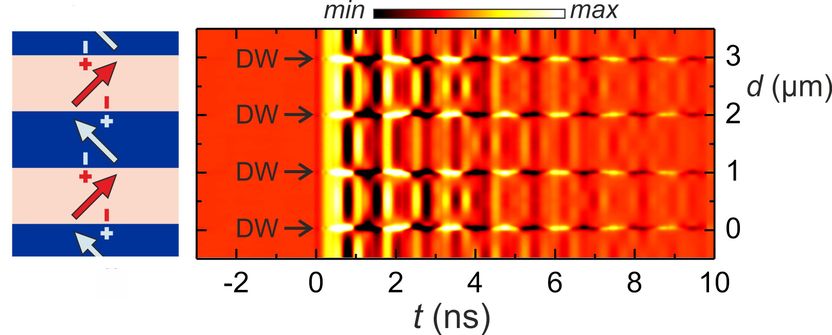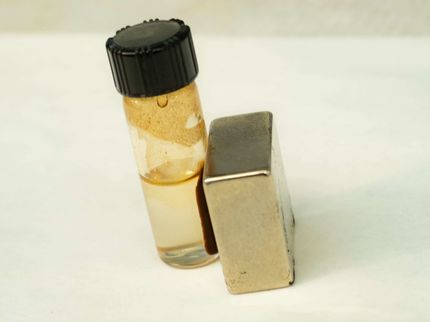Manipulation of the characteristics of magnetic materials
Advertisement
magnets are not everywhere equally magnetized, but automatically split up into smaller areas, so-called magnetic domains. The walls between the domains are of particular importance: they determine the magnetic properties of the material. A research team of material scientists from Kiel University is working on artificially creating domain walls to be able to modify in a controlled way the behaviour of magnets on a nanometre scale. In the long term, this method could also be used for high-speed and energy-efficient data transfer.

In the simulation, magnetic signals spread along the domain walls in a few nanoseconds. The signals behave in a wave-like manner, with the initially high amplitude rapidly becoming smaller.
Copyright: McCord
Splitting a magnetic material into small domains has significant energy benefits. But the focus of the research team from Kiel University is on the walls which separate the domains from each other. “The position and the density of these walls determine the characteristics of the entire magnetic layer,” said Jeffrey McCord, Professor of Nanoscale Magnetic Materials, with a focus on magnetic domains. “Being able to specifically set the positions of domain walls, therefore, has a major impact – but it's not all that easy to do,” said the leader of the research team.
In order to precisely position the domains and domain walls, the research team used a special method: the scientists irradiated magnetic multilayer films with ions. Domain wall structures, which are normally arranged randomly, can thereby be “imprinted” in the magnetic material as desired. “In this way, magnetic characteristics can be specifically modified, and on a reproducible basis as well. We can thus determine the positions of the domain walls ourselves and build our own domain wall gratings out of millions of 50-nanometre-wide walls. This allows us to create magnetic materials which display a completely different behaviour to external magnetic fields,” said a delighted McCord.
“We were surprised at how well spin waves spread in the domain walls and are directed by them,” emphasised McCord. Electron spins are also suitable for processing and encoding information. In the long term, therefore, the discoveries made by the Kiel scientists could be interesting for data transfer that does not take place via electrons, but via magnons – i.e. magnetic information transfer. “With artificially created domain wall structures, we can direct data streams faster and with less energy,” said McCord. Further areas of application include highly-sensitive magnetic sensors.























































